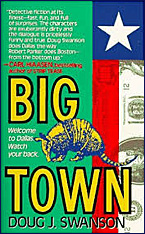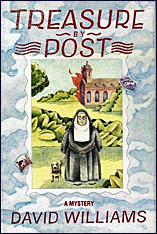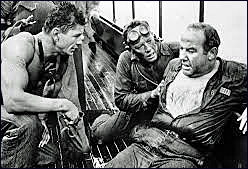WINDY CITY PULP CONVENTION 2017 REPORT
by Walker Martin
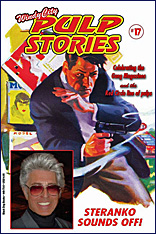
I believe there have been 17 versions of this excellent pulp and paperback convention and this may have been the best yet. 150 dealer tables and almost 600 attendees. This is the biggest crowd yet and the room seemed to be constantly busy with collectors prowling the aisles.
It all started with the usual group of serious and perhaps deranged pulp collectors driving out from New Jersey in a rental van. Between the five of us, we have more than 200 years of experience collecting books and pulps. In prior years we managed to make the trip in one death defying drive of 14 hours but this year we decided to split it up and take two days. The first day we drove about 11 hours before stopping at a motel which appeared to be connected to the Bates Motel in Psycho. The night clerk certainly thought we were a suspicious looking group because she refused our business and sent us on our way. Fortunately there was a Ramada Inn down the road and they were used to a van full of book collectors stumbling into the lobby.
The next day we drove three hours to the Chicago Pulp Art Museum, otherwise known as the house of Doug Ellis and Deb Fulton. Each year Doug and Deb have a pulp art luncheon for those collectors who love pulp and paperback original cover paintings. It’s a nice beginning to a great convention. Despite a recent addition the house is bulging with original art. Perhaps Doug can build another house in his back yard to house more paintings.
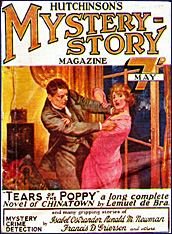
We then drove to the Westin Hotel and arrived in time to hang out in the Con Suite. This year my room was just down the hall on the 16th floor and made it easier for me to drink free beer and snacks. I renewed friendships with several collectors, most of whom I had not seen in a year or two. Unfortunately, I have now reached the age where I don’t recognize fellow collectors if I only see them once a year, so please accept my apologies if I ignored you or seemed to not recognize you. My eyesight is fading and old age is bothering the hell out of me, so several times I passed someone and then a minute later moaned “Oh hell, that was so and so, and I looked right through them.” Fortunately some collectors had canes or were limping or like Tony Tollin had a pet dog. That made it easier to recognize them….
Even all these years later, I still get excited when I enter a room full of books and pulps. At first I sort of stumbled down an aisle in a daze obviously suffering from sensory overload. But unlike a J.G. Ballard character, the books did not start to disappear from my sight. Instead they multiplied and I began to wonder which table to go to first. Should it be the table surrounded by cover paintings and art? Maybe the one loaded with vintage paperbacks? How about the boxes of digest crime and SF magazines? Damn it, there are rows and rows of pulps! Wait a minute, some old friends are waving to me…
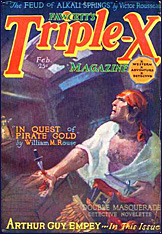
But then I saw a table that really stood out because all three dealers were British. So over I went to Malcolm Edwards, Alastair Durie, and Andy Richards (Cold Tonnage Books). I figured for them to make the trip across the Atlantic, they must be bearing some rare items. And they were! I even saw issues of the amazingly rare Hutchinson’s Adventure or Mystery magazine. WW II was really rough on some British magazines. (The paper drives.) But what I really scooped up were issues of Scoops, the 1934 British SF magazine. A complete set of all 20 issues.
Then I found twelve issues of Triple X. The title stands for the three genres of westerns, adventure, and detective fiction. Not the risque meaning that triple x has nowadays. Why this magazine is so rare is beyond me. It lasted for over 100 issues in the twenties and thirties and seemed to be quite popular with readers. Yet copies are hard to find and expensive.
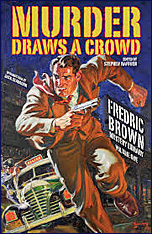
So OK, I’ve blown $1500 in a few minutes, and I still have three days of the convention to survive somehow. Will this be the pulp show that finally breaks me? Will I return home a penniless beggar? Will I have to borrow money, maybe skip meals? God Forbid, Go On the Wagon? The answer is no. Maybe next year. But I did find some more of my esoteric wants, such as Ace High, Cowboy Stories, Dime Detective.
Since we live in The Golden Age of Pulp Reprints, I filled up a box of recent books from Altus Press, Haffner Press, Black Dog Books, Murania Press, and also the book Weinberg Tales, which is almost 300 pages of Bob Weinberg on Collecting Fantasy Art, plus memories from fellow collectors like me and plenty of photos.
The reprint publishers have really done a great job and these recent books show an excellent sampling of the type of reprints. For instance Haffner Press (Haffnerpress.com) has just published two Fredric Brown collections which gather together all his mystery short stories. The titles are Murder Draws a Crowd and Death in the Dark, ,with introductions by Jack Seabrook who wrote a book on Fredric Brown. The stories also reprint the original illustrations. Highly Recommended!
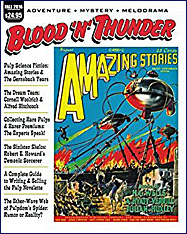
Altus Press had a boat load of books available and I especially recommend Leo Margulies: Giant of the Pulps by Philip Sherman and Gales & McGill, Volume One, by Frederick Nebel. A nice long introduction by John Locke, this book reprints the air adventures of these two flying soldiers of fortune. Also Altus Press has the latest two issues of Black Mask and Famous Fantastic Mysteries. The pulps are not dead!
Murania Press had the last issue of Blood n Thunder out. This is issue number 49 & 50 and it was a great run lasting 16 years. We now will see one shot issues on various topics. Also out from Murania is The Blood n Thunder Sampler which reprints some of the best articles from past issues.
Black Dog Books had several new collections out, and I liked The Trail of Blood and Other Tales of Adventure by Murray Leinster. Also Paths of Fire and Other Daring Tales of Adventure by Albert Richard Wetjen.
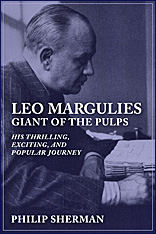
Every year the convention has a book titled Windy City Pulp Stories. Issue # 17 has several articles dealing with the Gangster pulps and the Red Circle Publications. Also pieces on Steranko, artist Tom Lovell, and David Kyle. Tom Roberts of Black Dog Books is the editor and does a fine job each year.
It’s worth going to this convention to meet and talk with other collectors about their passions. I’ve known artist Peter Poplaski for a long time and though he lives in France, I’ve seen him at several conventions. He is one of the top experts on Johnston McCulley and Zorro. This year he kept me amused with over a dozen masks that he had made of McCulley’s characters. He has now identified over 20 of them.
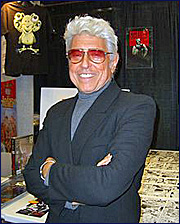
Windy City is known for its great auctions which run far into the night on Friday and Saturday, This year we had about 300 lots each night, mainly from the collection of Ron Killian. The catalog had a great photo of Ron Killian surrounded by towering stacks of pulps. Though I prefer book shelves, I can understand tall stacks also! All type of genres were represented in the auctions and the prices ranged from high to low, with many bargains.
The Guest of Honor was artist Jim Steranko, and he gave a speech and was available at his table to sign items. The art show was stunning with mainly pieces of art from the collection of Bob and Phyllis Weinberg. There was a Weinberg Tribute panel Friday night and I was honored to be part of it since I had known Bob since the late 1960’s and early 1970’s. In other words I was friends with Bob Weinberg when he still lived in New Jersey and was in his twenties. It really does not seem that it has been 45 years ago when we both started off building our collections.
Ed Hulse organized the film program as usual and the theme was “From Pulp to Silver Screen.” These were mainly obscure pulp related movies. Each movie was described in the Windy City Pulp Stories book.
We need this convention to keep the pulps alive so Doug Ellis, Deb Fulton, John Gunnison and others, all deserve our thanks. Next on the horizon is Pulpfest (Pulpfest.com) in July. If you liked Windy City, then you have to attend Pulpfest also. I ought to know, since I’ve been attending these shows most of my life!
